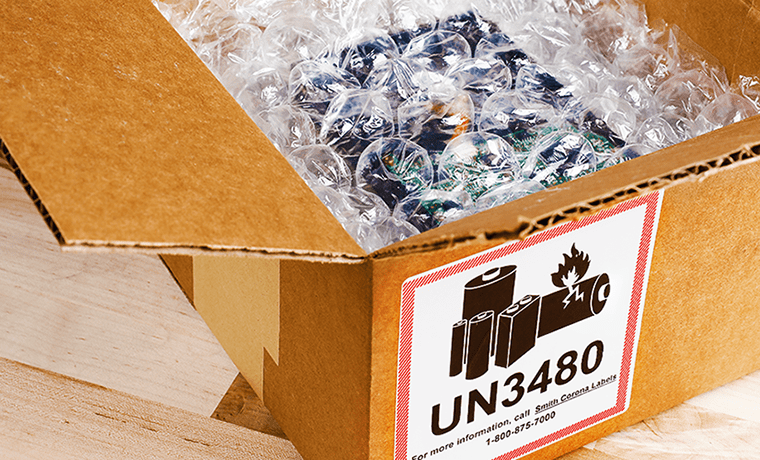A Step-by-Step Guide for Buyers
Buyers who want to import power banks from China to the U.S. may find the process daunting. Every step needs careful planning. You must find trustworthy suppliers and follow strict safety and customs rules. This guide outlines clear steps. It helps you find quality power banks in a short time and avoid common mistakes.
1. Finding Reliable Manufacturers in China
The first step is identifying reputable manufacturers.
Here’s how to start:
Key Platforms for Supplier Sourcing
Alibaba, Made-in-China, Global Sources: These platforms list thousands of suppliers. Focus on those with:
High ratings and positive reviews
(look for suppliers labeled as “Gold” or “Verified”).
Certification: CE, FCC, RoHS, and UN 38.3 (mandatory for lithium-ion batteries).
Questions to Ask Potential Suppliers
Can they handle large orders?
Do they offer customization (e.g., branding, packaging)?
Do they provide samples for quality testing?
Red Flags to Avoid
Suppliers unwilling to share certifications.
Prices that are much lower than market rates may indicate compromised quality.
2. Choosing the Right Power Bank Type
Not all power banks are the same. Here are the main types to consider:
| Type | Best For |
| Universal Power Banks | Everyday use for smartphones and tablets |
| Solar Power Banks | Outdoor activities or emergencies |
| Wireless Power Banks | Convenience-focused users |
| High-Capacity (20,000mAh+) | Many device charges or laptops |
| Compact Power Banks | Portability and Travel |
Pro Tip: Match the power bank type to your target users. Outdoor retailers may prefer solar models. In contrast, office suppliers often choose high-capacity options.
Understanding Capacity and Efficiency
Capacity (measured in mAh) determines how many times a power bank can charge a device. However, efficiency losses (energy wasted during charging) affect real-world performance.
Example:
A **10,000mAh power bank** with 75% efficiency provides **7,500mAh** of usable power.
For an **iPhone 15** (3,349mAh battery):
**7,500mAh ÷ 3,349mAh ≈ 2.24 charges**.
For an **iPhone 15 Pro Max** (4,422mAh battery):
**7,500mAh ÷ 4,422mAh ≈ 1.70 charges**.
**Key Takeaway**: Always account for efficiency (typically 60-90%) when marketing charging capabilities.
3. Packaging and Safety Requirements
Power banks are classified as hazardous materials due to lithium-ion batteries. Proper packaging is critical for safety and compliance:
**Mandatory Packaging Steps**
**UN-Certified Packaging**: Required for air shipments to prevent damage and short circuits.
**Terminal Protection**: Cover battery terminals with non-conductive tape or caps.
**Leak-Proof Liners**: Prevent electrolyte leakage during transport.
**Outer Packaging**: Use durable materials to withstand shocks.
**Labeling**:
Include “Lithium Battery” labels and Class 9 hazard diamonds on packages.

4. Navigating U.S. Customs and Import Regulations
Failure to comply with regulations can lead to delays or fines. Key requirements include:
**Certifications**
**UN 38.3**: Mandatory safety tests for lithium-ion batteries.
**FCC, CE, UL**: Ensure electromagnetic compatibility and safety.
**Documentation**
Commercial invoice (details product value and payment terms).
Material Safety Data Sheet (MSDS).
Country of Origin label (permanently affixed to products).
**Tariffs and Duties**
**Import Duty**: 3.4% for power banks.
**Emergency Tariff**: 20% added to most Chinese imports (effective March 2025).
**De Minimis Rule**: Shipments under $800 may avoid duties but still require compliance.
**Cost Example**: A \$10,000 shipment could incur \$2,340 in tariffs (3.4% + 20%).
5. Selecting Shipping Methods
**Air Freight**
**Pros**: Faster (8-12 days).
**Cons**: Expensive; strict hazardous material rules.
**Sea Freight**
**Pros**: Cost-effective for large shipments.
**Cons**: Slower (30-45 days).
**Pro Tip**: Team up with a freight forwarder who knows hazardous materials. This helps make logistics easier.
Partnering with a Freight Forwarder
A reliable freight forwarder can:
Handle customs clearance.
Provide insurance for lost or damaged goods.
Advise on compliance (e.g., UN packaging, labeling).
**Questions to Ask Forwarders**
Do they have experience shipping lithium batteries?
Can they provide real-time tracking?
6. Calculating Total Costs
Beyond product costs, factor in:
Shipping fees.
Tariffs (up to 23.4% total for U.S. imports).
Packaging and certification expenses.
**How to reduce tariff costs**
Focus on high-margin products.
Negotiate bulk discounts with suppliers.
7. Ensuring Compliance with U.S. Safety Standards
**Overcharge Protection**: Prevents battery damage.
**Short-Circuit Prevention**: Use built-in fuses or circuit breakers.
**Carrier Requirements**: Confirm whether your shipping provider needs extra paperwork.
8. Final Checklist Before Shipping
1. Verify supplier certifications (CE, FCC, UN 38.3).
2. Test product samples for quality.
3. Ensure proper packaging and labeling.
4. Prepare all required documents.
5. Confirm tariff calculations with your forwarder.
**Conclusion**
Importing power banks from China to the U.S. needs careful planning. First, choose certified suppliers. Then, follow strict safety and customs rules. This guide helps you reduce risks, prevent delays, and create a reliable supply chain. Work with skilled logistics providers. Stay aware of tariff changes to keep profits up.
Stay ahead in the competitive electronics import market! Subscribe to our newsletter for:
Exclusive guides on navigating tariffs, certifications, and supplier negotiations.
Real-time updates on U.S.-China trade policies affecting power banks.
Pro tips to cut costs and streamline logistics.



